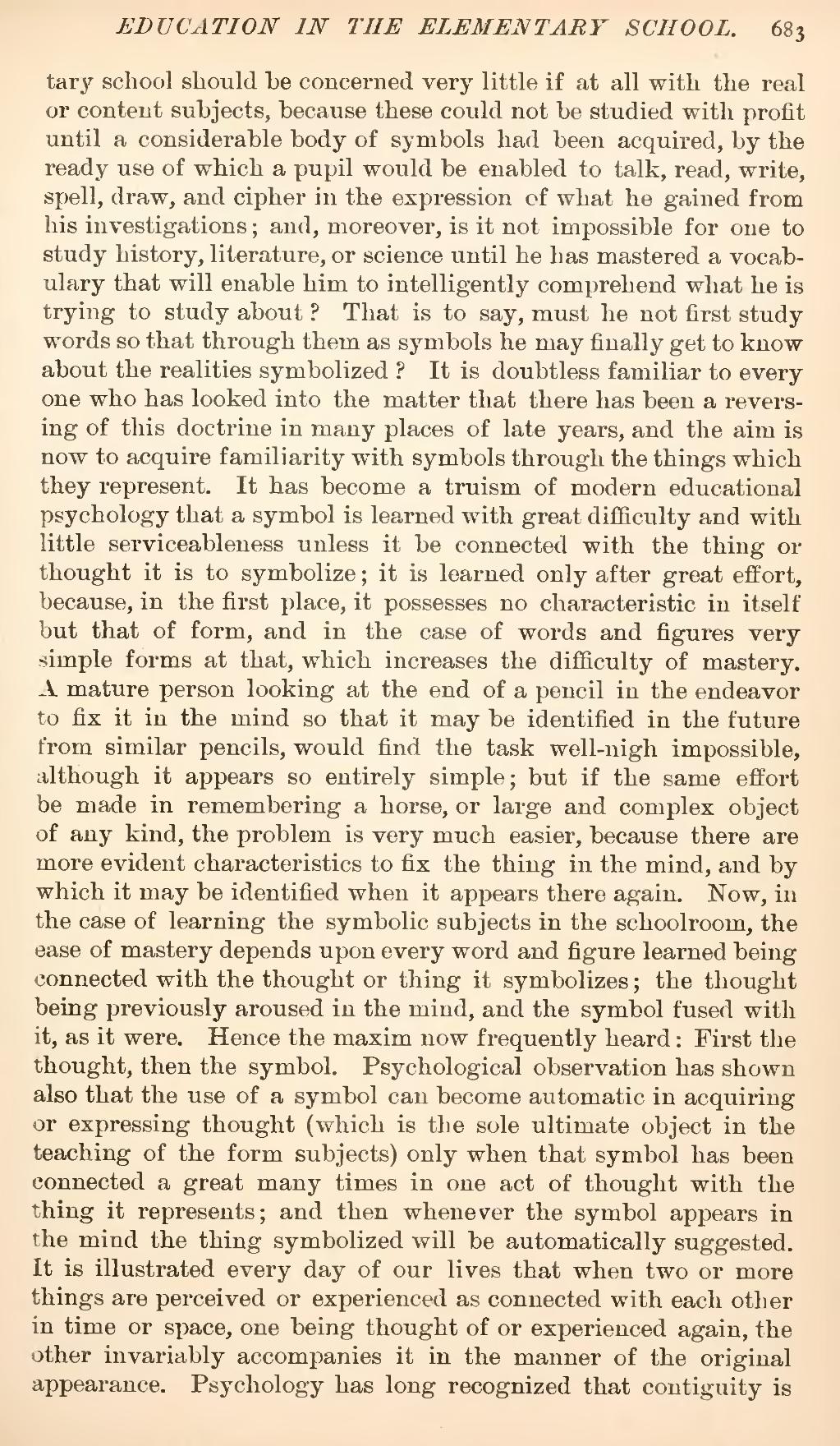tary school should be concerned very little if at all with the real or content subjects, because these could not be studied with profit until a considerable body of symbols had been acquired, by the ready use of which a pupil would be enabled to talk, read, write, spell, draw, and cipher in the expression of what he gained from his investigations; and, moreover, is it not impossible for one to study history, literature, or science until he has mastered a vocabulary that will enable him to intelligently comprehend what he is trying to study about? That is to say, must he not first study words so that through them as symbols he may finally get to know about the realities symbolized? It is doubtless familiar to every one who has looked into the matter that there has been a reversing of this doctrine in many places of late years, and the aim is now to acquire familiarity with symbols through the things which they represent. It has become a truism of modern educational psychology that a symbol is learned with great difficulty and with little serviceableness unless it be connected with the thing or thought it is to symbolize; it is learned only after great effort, because, in the first place, it possesses no characteristic in itself but that of form, and in the case of words and figures very simple forms at that, which increases the difficulty of mastery. A mature person looking at the end of a pencil in the endeavor to fix it in the mind so that it may be identified in the future from similar pencils, would find the task well-nigh impossible, although it appears so entirely simple; but if the same effort be made in remembering a horse, or large and complex object of any kind, the problem is very much easier, because there are more evident characteristics to fix the thing in the mind, and by which it may be identified when it appears there again. Now, in the case of learning the symbolic subjects in the schoolroom, the ease of mastery depends upon every word and figure learned being connected with the thought or thing it symbolizes; the thought being previously aroused in the mind, and the symbol fused with it, as it were. Hence the maxim now frequently heard: First the thought, then the symbol. Psychological observation has shown also that the use of a symbol can become automatic in acquiring or expressing thought (which is the sole ultimate object in the teaching of the form subjects) only when that symbol has been connected a great many times in one act of thought with the thing it represents; and then whenever the symbol appears in the mind the thing symbolized will be automatically suggested. It is illustrated every day of our lives that when two or more things are perceived or experienced as connected with each other in time or space, one being thought of or experienced again, the other invariably accompanies it in the manner of the original appearance. Psychology has long recognized that contiguity is
